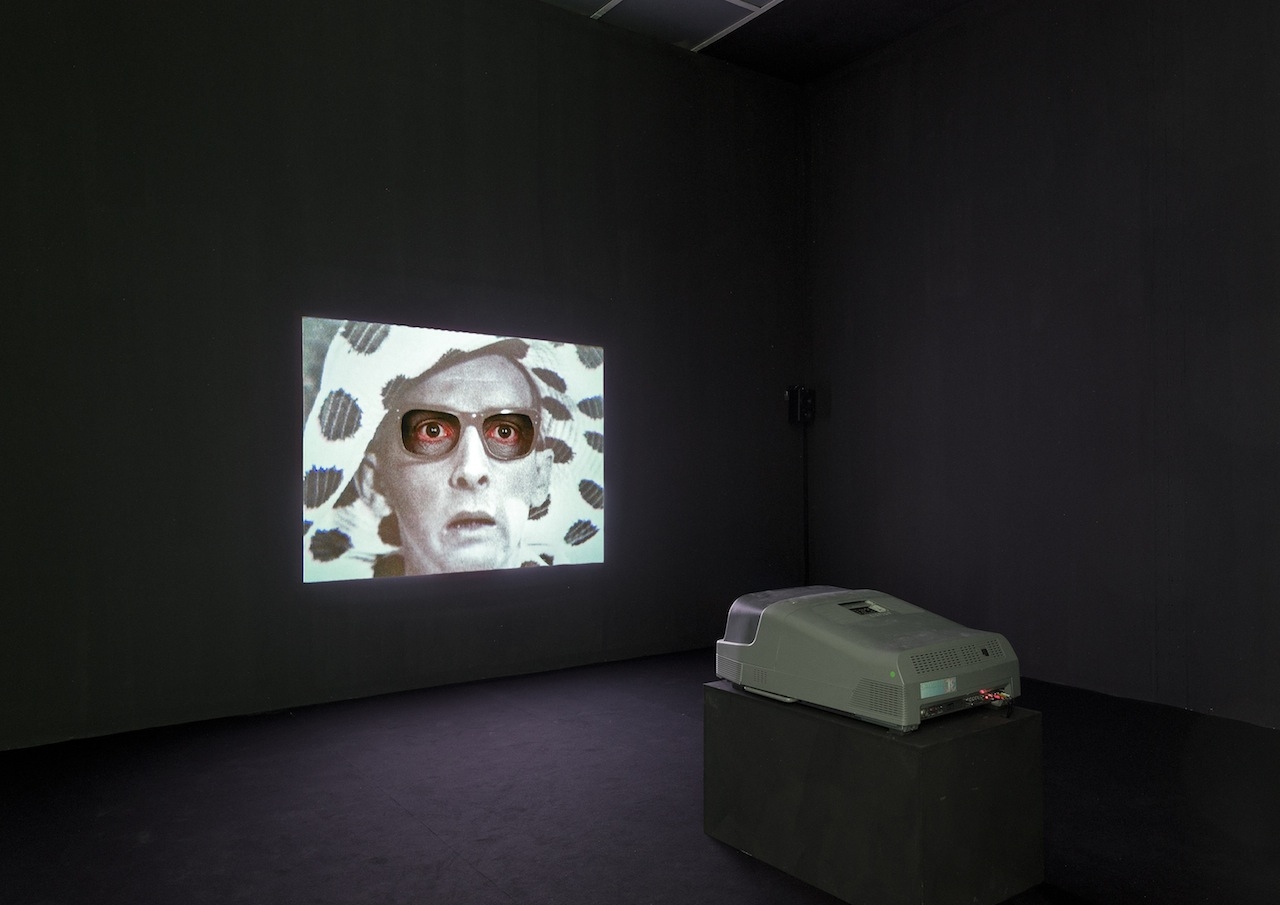Like most of us, Mark Leckey is haunted by images. Stuck on them, obsessed by them. Some – stills or snippets of moving pictures, familiar or uncannily foreign forms – might echo in his head for years. The artist describes these pictures, in this show’s press materials, as an ‘autistic’ grid: the irrational detritus and highlights in the visual life of a modern person, in this case, a Generation 7 man from the north of England. We Transfer, Leckey’s first solo exhibition in Austria (which, under the auspices of Secession’s ‘invite a friend’ offer, he chose to share to a degree with Alessandro Raho), is in part the physical manifestation of his attempt to exorcise these images; to work with them by working through them with healthy doses of both humour and darkness.
On the walls of the Secession’s darkened main space, ten LED screens – some of them having appeared singly or in other constellations within other shows in Leckey’s busy exhibiting schedule – act as supersize GIFs, showing short loops of images that the artist’s synapses have fixated upon: a fishnet-stockinged female leg, dancing dudes, the ominous shadow of Disney’s Pinocchio as donkey boy, a closeup of a drag queen’s face, a full moon in clouds, a bobbing, disembodied penis-like object (a digital take on Herman Makkink’s Rocking Machine from 1969, well known to fans of A Clockwork Orange), an RGB abstraction in bold patterns of, yes, red, green and blue.
In one of the exhibition’s smaller side spaces, the motif of an additional LED screen, The Ecstasy of Always Bursting Forth (2013) – in which a bespectacled older man in polka-dotted drag (a rather poignant still of an unnamed German actor from Billy Wilder’s 1961 film One, Two, Three) kneels as if in ecstatic prayer – gets much closer examination by both Leckey and Raho. The screen version shows the man in black and white, with only the polka dots of his dress and hat flickering in glaring RGB; but the image repeats in various sizes and iterations elsewhere in the room. Leckey’s versions appear as black-and-white and colourised silkscreens; the gentler, smaller painted canvases are by Raho, whom Leckey also invited to show in the Graphisches Kabinett upstairs. A few steps further into the room’s black box, a ‘moving still’ sees Leckey’s own wide eyes peering from behind the Polka Dot Man’s specs in a closeup. It is enough to make a viewer gasp, then laugh – Leckey, here, pokes fun at his own autistic grid for ‘sticking’ to this image enough to dedicate two rooms to it and even become part of it; and at us for joining in on the joke.
It’s unusual these days to see a Leckey exhibition that’s largely in two dimensions (another black box shows a series of his older films twice a day, plus a new film based on Louise Bourgeois’s Nature Study, 1984). The LED pieces are in fact distinctively painterly – mentally erase their electric cords and they are even displayed as such, and their psychedelic approach and range call Sigmar Polke to mind. But filtering through all the while are Leckey’s perennial concerns with the notions of object personification, image replication and how the technology humans create in turn creates humans. In We Transfer, Leckey succeeds in converting his visual obsessions into ours; here his exorcism, indeed transcendence, becomes our thought exercise.
11 September – 1 November 2015, Secession, Vienna
This article was first published in the January & February 2016 issue of ArtReview.
